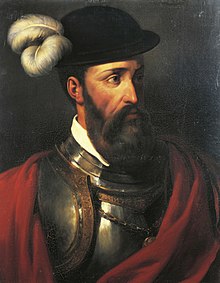Lambayeque History
This article is from the series: |
| History of Lima |
| History of Arequipa |
| History of Andahuaylas |
| History of Iquitos |
| History of Lambayeque |
| History of Piura |
| History of Trujillo |
Pre-Inca period
In a remote time, a large fleet of strange rafts arrived on the beaches of the current San José cove, in Peru, manned by a brilliant procession of foreign warriors, whose chief was a man of great talent and courage called Naylamp, who founded this civilization known as Sicán or Lambayeque (VII century - X AD approx.)
Their descendants are the forgers of the great Chimú Culture, forged in Lambayeque before the Inca Empire and which developed until it achieved a notable state parallel to the Inca Civilization and unlike it, moved its capital to more propitious and strategic areas establishing large urban centers.
They were great farmers and textiles, but above all wonderful goldsmiths, with extraordinary works in gold.
Incan times
The conquest of the territory that today forms Lambayeque at the hands of the Incas lasted almost four decades, having intervened for it successively Pachacutec, Tupaq Yupanki and Wayna Qhapaq.
Viceregal period
When Francisco Pizarro passed through the place, on his way to Cajamarca to finalize the conquest of the empire, he was amazed to see the gold on display in the form of vessels and utensils. During colonial times, rivalry arose between the towns of Lambayeque and Santiago de Miraflores de Saña, due to the opulence of the latter, even arousing the greed of pirates. An overflow in 1720 flooded Saña and ended a flourishing city.
Republican era
Independence
During emancipation and independence, the people of Lambayeque had as their leader the patriot Juan Manuel Iturregui who propagated libertarian ideas and helped bring in weapons for said cause and who offered to send the surrender message was Pascual Saco Oliveros.
Among the numerous letters that San Martín sent to the Peruvian aristocrats, there are those he sent —from Pisco in September and from Huaura in November— to the Lambayecano potentates, urging these slave-owning landowners and merchants to change sides.
Produced this change between November and December 1820—for the reasons we have already seen, the independent faction led by the Lambayeque elite had a majority both among the authorities and among the military forces of the province.
The chiefs were aristocrats but the mass of militiamen was not and in addition to the patriotic armed detachments, nails and members of the common people were also integrated. Francisco de Paula Ruiz, nicknamed "Diablo Grande", who was a tinterillo or "papelista" in Lambayeque. The historian from Lambayeque Germán Leguía y Martínez points out that he was formed:
"A numerous and enthusiastic core of people willing to do anything, death, in whose bosom could be not a few of the fearsome arms of the bands of robbers. His servants (those of Diablo Grande) those of his courageous companions, distinguished themselves by a test of loyalty and extraordinary activity".
Contenido relacionado
Category:History of Guyana
Flag of Argentina
Luis de Carvajal y de la Cueva
